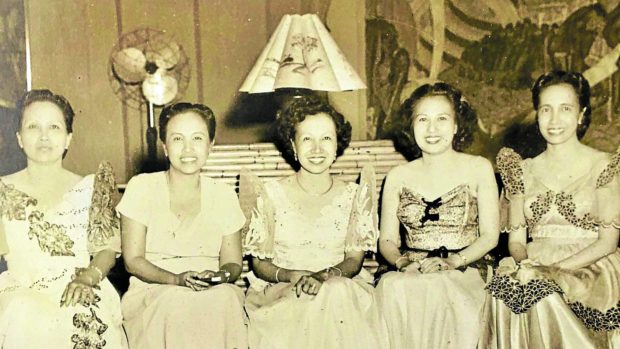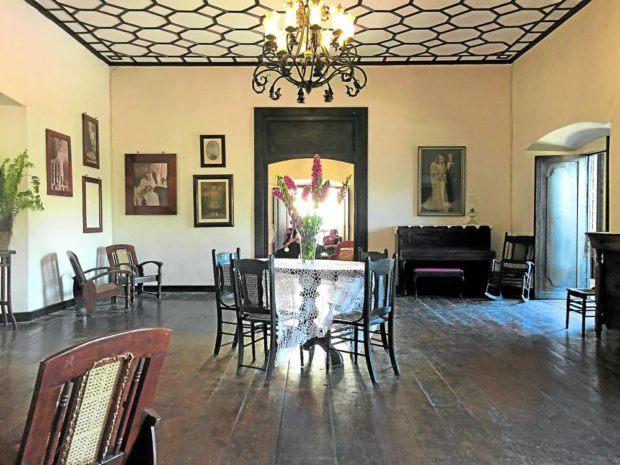
—PHOTO COURTESY OF PETE DACUYCUY
Declared an Important Cultural Property by the National Museum in 2015 for having exceptional cultural significance, the Valdes-Lardizabal House in San Nicolas, Ilocos Norte, has been given a fresh lease on life in its close to two centuries of existence.
Built in the early 19th century, the house is the largest and oldest bahay na bato in San Nicolas, and is comparable to the imposing houses of that type in Laoag and Vigan. It is now called Balay San Nicolas and serves as a local cultural hub following its sale to the local government in 2015.
The house is one of the centerpieces of the local government’s culture-based governance, which commenced with a cultural mapping project in 2014. Its restoration was spearheaded by the local government with the help of art patron Joven Cuanang and the local cultural group, San Nicolas Express Bin-I Foundation Inc.
Inaugurated on Dec. 28, 2020, it will soon host a restaurant serving Ilocano dishes, a souvenir shop, an office of the Department of Tourism (DOT), an events venue and exhibition spaces. A room is also reserved for visitors’ accommodations.

The inauguration was graced by Tourism Secretary Bernadette Romulo Puyat, provincial officials led by Gov. Matthew Manotoc, San Nicolas Mayor Alfredo Valdez, other town officials, DOT Ilocos region officer in charge Evangeline Dadat, National Museum Ilocos head Paolo Chan and members of the Valdes-Lardizabal clan led by Pete Dacuycuy.
Meaningful experience
In her speech during the event, Puyat praised those involved in the conservation of the historic house, describing it as “an important cultural vessel and a storyteller to future visitors.”
“I also laud everybody involved for the strong advocacy toward cultural heritage conservation and sustainable tourism development,” she said.

“As an Important Cultural Property, it deserves to be restored to its grandeur and be a significant landmark, not only in the municipality, but the whole province,” she added.
Puyat said that the house was witness to many historic events and day-to-day activities of the people of San Nicolas, which she said is important to the heritage of the town, giving the visitors “a unique, exciting and meaningful experience.”
Puyat also underscored her agency’s program of supporting cultural tourism initiatives of local governments, such as the opening of Balay San Nicolas. “We are optimistic that this will help pave the way for the sustained recovery of the tourism industry and the economy,” she said.
Monument of culture
In an interview with Lifestyle, Valdez said the house is the most ideal to restore as even in its previous forlorn state, it is still beautiful. He said the house was owned by an alcalde during the Spanish period and was a place of social events then. “Not every town or city has something like this.”
Valdez also said the house is a monument to the rich heritage of the award-winning town for culture-based projects. During the first Philippine Heritage Awards in 2018, San Nicolas won under the Heritage Education and Interpretation category for incorporating in its local education programs their traditional damili (earthenware) industry.
Publicist Dacuycuy, who is one of the descendants of the original owner, said he was elated to see the house, where he was born in 1941, restored. “The family is so glad that the mayor and his administration promised to keep up this house as a place for tourism and to maintain it all the way,” he said. Dacuycuy said that what was done for the house is a way of preserving the legacy of his family.
Among the events during the opening was a cultural show directed by Aida Cuanang of Bin-I Foundation featuring Ilocano folksongs, such as “Pamulinawen,” “Banattiran” and “Nagpintas kan Manang,” as well as the Ilocano poetic chant dallot. A fashion show of clothing made from abel Iloko was also held, presenting works of Vic Barba, Edgar Madamba and journalist Niña Corpuz. —CONTRIBUTED INQ

